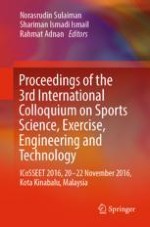2019 | OriginalPaper | Chapter
Effects of Concurrent, Strength, and Endurance Training on Metabolic Syndrome Risk Factors Among Obese Females
Authors : Sarina Md. Yusof, Noor Izzati Mohd Idris, Suhana Aiman, Zulkifli Abd Kadir
Published in: Proceedings of the 3rd International Colloquium on Sports Science, Exercise, Engineering and Technology
Publisher: Springer Singapore
Activate our intelligent search to find suitable subject content or patents.
Select sections of text to find matching patents with Artificial Intelligence. powered by
Select sections of text to find additional relevant content using AI-assisted search. powered by
